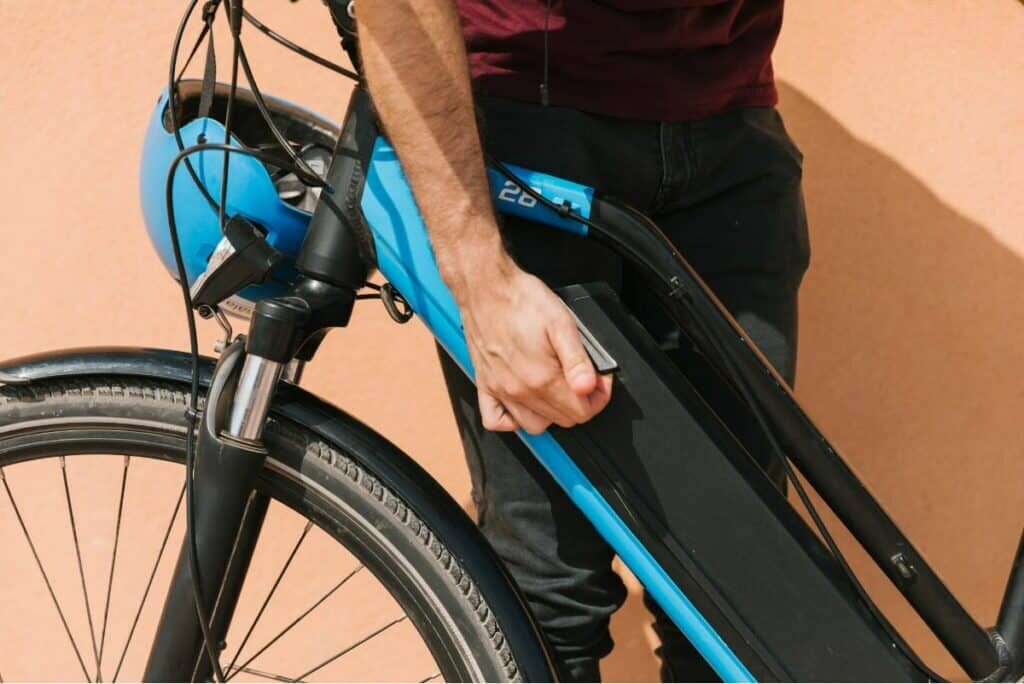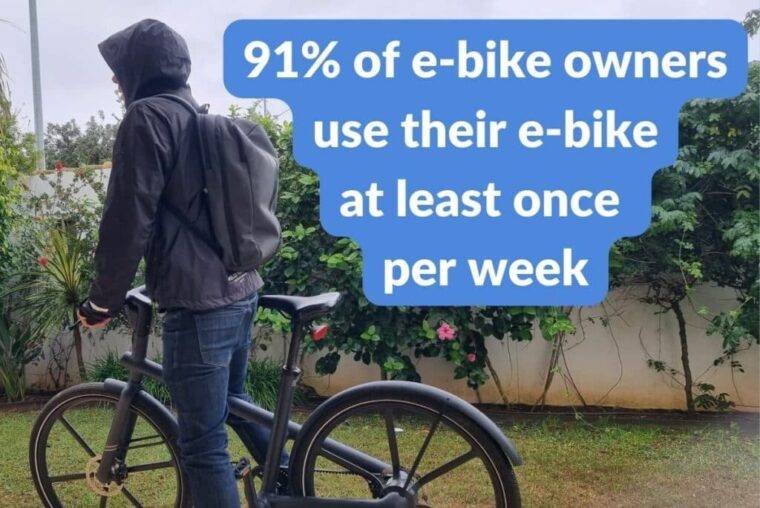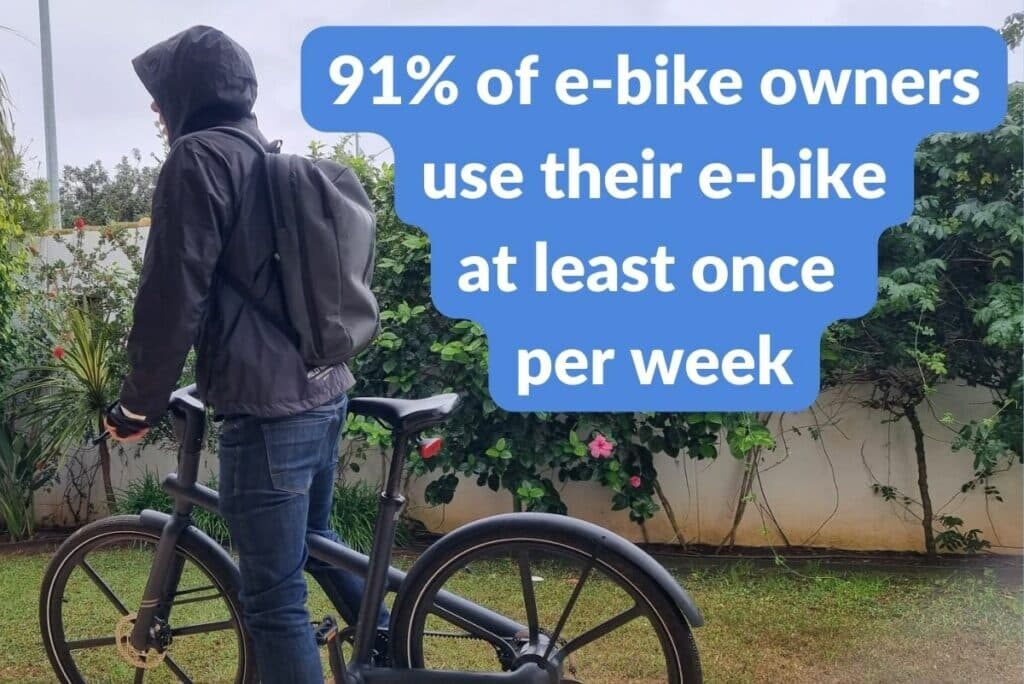There’s no denying that electric bikes are very exciting. They give cyclists a way to go further and faster without having to work harder, resulting in a more enjoyable ride that doesn’t leave you drenched in sweat.
However, people still have a lot of questions about electric bikes, which is understandable seeing as their popularity is still relatively new. There are many cyclists who are intrigued by the concept of an e-bike, but are wary of shelling out a lot of money for something that might just be a gimmick, or that they feel they might not use as much as a regular bike.
Here, we’ve created a one-stop-shop of electric bike statistics and facts to help you understand e-bikes better than ever before. Read on to discover incredible facts and interesting statistics about the electric bike market, the cost of e-bikes, how common e-bike theft is, who uses e-bikes and more — you’ll be an e-bike expert in no time!
Best Electric Bike Statistics
- 1 in 20 people in the UK own an e-bike (Tredz)
- Amongst study participants who had bought an e-bike, total journeys made by bike compared to other modes of transport went up from 17% to 49%, and average cycling distance per day more than quadrupled (Do people who buy e-bikes cycle more?)
- 91% of e-bike owners rode their electric bike weekly or daily, up from 55% when they had a manual bike (National Institute for Transportation and Communities)
- 42% of people want access to an e-bike to help them cycle more (Sustrans Walking and Cycling Index 2021)
- The EU e-bike market tends to be male-dominated, with 90% of e-bike users being male (Ray Verhelst)
- The average cost of an electric bike in China is just $ 167 (ebicycles.com)
- The first patent for an e-bike was granted on December 31, 1895, to Ogden Bolton Jr. (ebicycles.net)
- Europe’s e-bike market has shown considerable growth: 500% between 2009 and 2018, with North America catching up (ebicycles.com)
- In 2023, e-bike sales are estimated to reach 40 million units worldwide, generating about US$ 20 billion in revenue (ebicycles.net)
- E-bikes could save American consumers over $ 1.7 trillion in total fuel costs by 2025 (Juiced Bikes)
Electric Bike Market Statistics
- The global e-bike market size is expected to be worth over $ 120 billion by 2030 (Vision Research Reports)
- The UK e-bike market was worth £280 million in sales in mid-2021, and based on the trajectory of sales it is expected that e-bike sales may triple in the next three years (Mintel/Bicycle Association)
- The search term ‘Electric Bike’ is searched more than 2.4 million times a year in the UK (Tredz)
- More 35-44 year olds in the UK say they would cycle much more if they had an e-bike than all other age groups (Tredz)
- 1 in 10 people say they’d actually cycle less if they had an e-bike (Tredz)
- The e-bike market is expected to be worth $ 48.46 billion (£34.74 billion) by 2028 (Tredz)
- 65% of e-bike owners were motivated to buy an electric bike to reduce number of car journeys and be more environmentally-friendly (Portland State University)
- 91% of e-bike owners rode their electric bike weekly or daily, up from 55% when they had a manual bike (National Institute for Transportation and Communities)
- 88.36% of all global e-bike sales are pedal-assisted bikes (ebicycles.com)
- China is leading the way in terms of e-bike adoption: in 2013, it produced 37 million e-bikes and sold 32 million within the country (INSG)
- Europe’s e-bike market has shown considerable growth: 500% between 2009 and 2018, with North America catching up (ebicycles.com)

How Many Electric Bikes Are Sold Each Year?
- In the UK in 2020, 3,260,000 bikes of all kinds were sold — 160,000 of which were e-bikes (Cycling UK)
- Sales of e-bikes in the UK and Europe rose by 12% in 2021 compared to 2020 (Confederation of the European Bicycle Industry)
- More than 80% of all e-bikes sold in Europe in 2021 were produced in Europe (Confederation of the European Bicycle Industry)
- In 2022, the global e-bikes market was expected to reach around 36.5 million units — data is still being collected to find the actual sales figures for 2022 (Statista)
- 42% of people want access to an e-bike to help them cycle more (Sustrans Walking and Cycling Index 2021)
Electric Bike Sales Statistics
- In the US, ‘baby boomers’ are most likely to buy an e-bike — the leading age groups for e-bike sales in America are 45-54, 55-64, and 65+ (Ray Verhelst)
- The EU e-bike market tends to be male-dominated, with 90% of e-bike users being male (Ray Verhelst)
- In the US, e-bike users are 70% male, 30% female (Ray Verhelst)
- People buy electric bikes for all sorts of reasons — to help them get up hills, to use instead of driving a car, to ride with less effort, to increase fitness, and to keep up with family and friends (ebicycles.com)
- Electric bike sales in the US grew by 240% in the 12 months to July 2021, while general cycling equipment sales grew only 15% in this time (NPD)
- Urban commuters were targeted for e-bike sales when interest increased during the pandemic, with many retailers unveiling sub-$ 1,000 models to appeal to that demographic (Electrek)
- 35.6% of e-bike riders surveyed by Portland State University bought their e-bike online (Portland State University)
- 37.1% of e-bike riders surveyed by Portland State University bought their e-bike from a specialty e-bike shop (Portland State University)
- 18.6% of e-bike riders surveyed by Portland State University bought their e-bike from a standard bike shop (Portland State University)
- 42% of e-bikes in the EU are imported from outside of the EU (bicycle-guider.com)
How Much Do Electric Bikes Cost?
- The average cost of an electric bike in Western Europe is $ 1,546 (ebicycles.com)
- The average cost of an electric bike in North America is $ 815 (ebicycles.com)
- The average cost of an electric bike in China is $ 167 (ebicycles.com)
- E-bikes are cheaper in China because they use lead-acid batteries which are cheaper than other types, making e-bikes more accessible to more of the population in China (ebicycles.com)
- Budget electric bikes in the UK can cost in the region of £1,000 (Pure Electric)
- Specialist e-bikes like e-road and e-mountain bikes tend to cost more than urban e-bikes (Pure Electric)
- You can expect to pay anywhere from £1,250 to over £3,000 for flat-bar models from Specialized, Scott and BMC (Pure Electric)
- Folding e-bikes from the likes of Brompton will cost upwards of around £2,900 (Pure Electric)
- Running an electric bike is significantly cheaper than running a car – a full talk of petrol in a small car can cost up to £50, while depending on the combination of battery and charger you have, it will cost around 5-10p worth of electricity to charge an e-bike in 4-6 hours (Raleigh)
- Electric bikes, like all bikes, will need their tyres replaced from time to time, and a replacement tyre costs around £30 (Raleigh)
- Quality electric bikes will last for around 7-10 years if looked after well (Raleigh)
- Depending on the value of the electric bike, insurance will cost around £7.50 to £15 per month (Raleigh)

E-Bike Theft Statistics
- E-bike theft claims in the UK rose by 37% between 2020 and 2021 (Aviva/Forbes)
- The typical e-bike claim is $ 2,450 (Aviva/Forbes)
- The chance of an electric bike being stolen is around 3.8% per year, compared to 1.3% for regular bikes (Discerning Cyclist)
- In the Netherlands, electric bikes are three times more likely to be stolen than regular bikes (ADS)
- Thefts of electric bikes have more than doubled in the last three years to around 25,000 a year (ADS)
- Bicycle crime in the UK fell by 11.5% in 2021, with 64,500 bike thefts reported in 2021 compared to 72,920 in 2020 (Quotezone)
- The Metropolitan Police in London registered the most reported bicycle thefts in 2021 with more than 21,000 (Quotezone)
- Wales had some of the lowest number of bike thefts in 2021 (Quotezone)
- During 2021, England & Wales’s police forces received 69,603 crime reports about bicycle theft (CrimeRate)
- In 2020, there were 74,895 reports of bicycle theft in England and Wales (CrimeRate)
E-Bike Usage Stats
- 1 in 20 people in the UK own an e-bike (Tredz)
- Nearly 40% of people in the UK say they’d cycle more if they had an electric bike (Tredz)
- 10.2% of people say they would cycle less if they had an electric bike (Tredz)
- 1 hour of cycling a normal bike burns an average of 500 calories, while 1 hour of cycling an e-bike burns an average of 390 calories (Medicine & Science in Sports & Exercise, November 2009)
- 28% of electric bike riders in London purchased their bike as a replacement for a car (Transport for London)
- 65% of US electric bike owners were motivated to buy an electric bike to reduce the number of car journeys they made (Portland State University)
- In an Australian study, 60% of respondents said that replacing some car journeys was a primary motivating factor in buying an electric bike (E-bikes in the Mainstream: Reviewing a Decade of Research)
- 42% of respondents to a North American survey said that their e-bike has helped them avoid collisions with other road users (Portland State University)
- Amongst study participants who had bought an e-bike, total journeys made by bike compared to other modes of transport went up from 17% to 49%, and average cycling distance per day more than quadrupled (Do people who buy e-bikes cycle more?)
- People who purchased an e-bike increased their bicycle use from 2.1 to 9.2 km per day on average (Do people who buy e-bikes cycle more?)
Facts About E-Bikes
- Pedal-assisted electric bikes are the most popular kind, taking up 88.36% of the global market (facts.net)
- The first patent for an e-bike was granted on December 31, 1895, to Ogden Bolton Jr. (ebicycles.net)
- In 1989, Yamaha built one of the first prototypes of electric bicycles and also invented the pedal-assist system in 1993 (ebicycles.net)
- The worldwide production of e-bikes grew by 35% between 1993 and 2004 (ebicycles.net)
- In 2023, e-bike sales are estimated to reach 40 million units worldwide, generating about US$ 20 billion in revenue (ebicycles.net)
- The average e-bike commute in the US is 26 minutes long (Juiced Bikes)
- US e-bike riders’ average BMI is 24.8 which is considered healthy by the CDC (Juiced Bikes)
- E-bikes release 21-22g of CO2 per kilometre travelled, compared to 271g of CO2 per kilometre for cars (Juiced Bikes)
- E-bikes could save American consumers over $ 1.7 trillion in total fuel costs by 2025 (Juiced Bikes)
- For Americans, the average cost of car ownership per year after initial purchase is $ 9,761 — for e-bikes it’s just $ 200 per year (Juiced Bikes)

What do these e-bike statistics mean?
These e-bike statistics say a lot about the popularity of the electric bike market, people’s reasons for using an electric bike, and the impact electric bike usage is having on people’s health and the environment.
It’s clear that electric bikes are becoming increasingly popular — the fact that 1 in 20 people in the UK own an e-bike is staggeringly impressive. Projections that the global e-bike market could reach over $ 120 billion by 2030 is promising, and the fact that sales are growing despite the relatively high cost of e-bikes is good news.
The stats also show that electric bikes are helping people live healthier lives, replacing car journeys with e-bike rides and getting more exercise day-to-day as they’re able to get from A to B quickly without getting too tired or sweaty.
People seem to feel very safe on their e-bikes, with 42% of respondents to a North American survey saying that their e-bike has helped them avoid collisions with other road users.
The data has also shown the massive transport cost reductions possible when people switch to electric bikes: it’s amazing that e-bikes could save American consumers over $ 1.7 trillion in total fuel costs by 2025.
E-bikes seem to be pretty popular across the Western world, which is also good news and could help influence local authorities to invest more in cycling infrastructure.
It’s also interesting to see the electric bike theft statistics, and while it isn’t good news that the chance of an electric bike being stolen is around 3.8% per year compared to 1.3% for regular bikes, this knowledge will help e-bike owners be more wary of bike crime and hopefully will influence police forces to help reunite stolen bikes with their owners.
The post Electric Bike Statistics: 68 Incredible Stats About E-Bikes appeared first on Discerning Cyclist.

